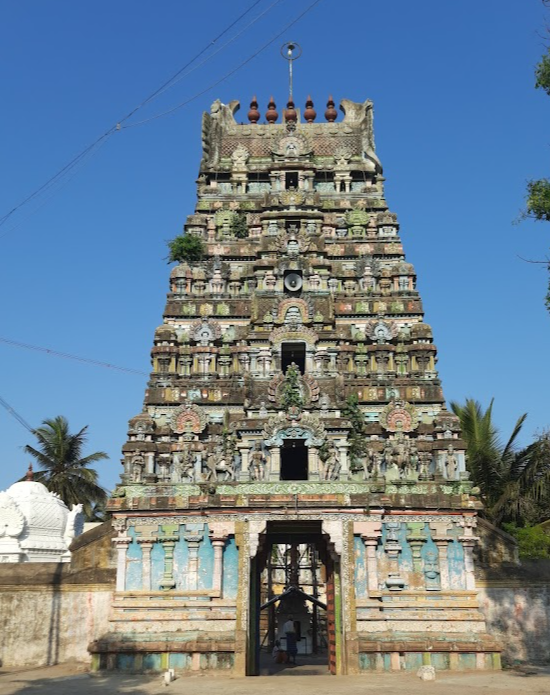Origin/History :-
Since Thirugnanasambandar sang hymns in praise of Lord Shiva at this temple, the original Mada temple is believed to have existed before the 7th century, likely built by Ko Chengat Chozha. It was later reconstructed as a stone temple during the Chozha period and further expanded during the Vijayanagara period.
According to inscriptions, this place was referred to as Jayankonda Chozhavalanattu Thiruvazhunthur Nattu Thiruvazhunthur, and Lord Shiva was called Thiruvazhunthur Udayar and Thiruvazhunthur Udayar Thirumadamudaya Nayanar.
An inscription from the reign of Kulothunga Chola III records his meikeerthi (title of accomplishment), stating that he performed the Veer Abhishekam and Vijay Abhishekam after conquering Madurai, Eelam, Karur, and the Pandya crown.
One inscription also mentions an endowment for performing Thirumanjanam (sacred ablution) for Lord Shiva, where water was brought from the Kaveri River, with donations made to support this ritual.
The Maha Kumbhabhishekam was conducted on 23rd June 1999 following renovations.
Puranic Significance :-
- Therezhunthur holds a special place in mythology due to its connection with the legends of several nearby Paadal Petra Shiva Sthalams. The key events are as follows:
- Therezhundur: Lord Shiva cursed Goddess Parvathy, turning her into a cow. Lord Mahavishnu assumed the role of a shepherd here.
- Thirukkozhambam: Goddess Parvathy, in her cow form, worshipped Lord Shiva. During worship, her hoof accidentally struck Lord Shiva's chest, leaving a mark.
- Thiruvaduthurai: Here, Goddess Parvathy, still in her cow form, continued her worship of Lord Shiva. It is in this place that she was relieved of her curse and restored to her original form.
- Thiruthuruthi (Kuthalam): Sage Bharatha performed a yagna, and Goddess Parvathy is believed to have emerged from the fire as a child.
- Ethirkolpadi: Lord Shiva was received as a groom by his father-in-law, Sage Bharatha.
- Thiruvelvikudi: The wedding ceremony, including the yagna (Velvi), took place here. It is the sacred location where the earthly wedding of Lord Shiva and Goddess Parvathy was conducted.
- Thirumanancheri: Lord Shiva and Goddess Parvathy granted their wedding darshan (divine vision) to all devotees here.
